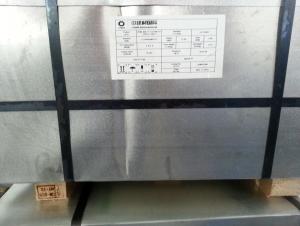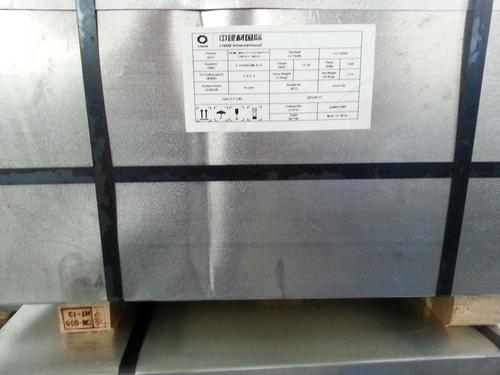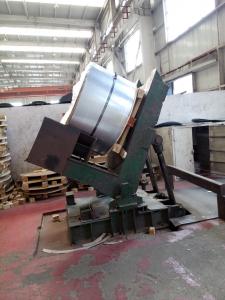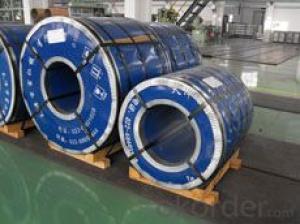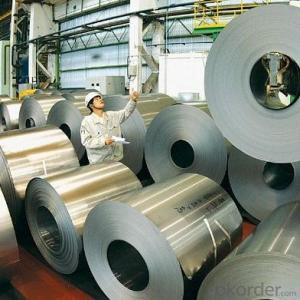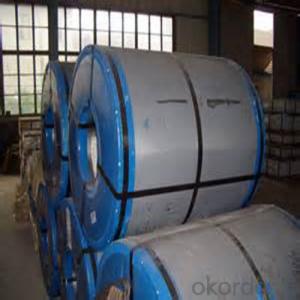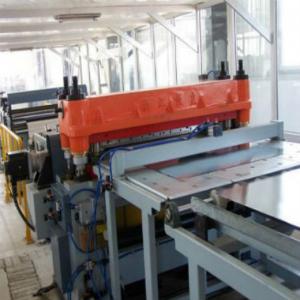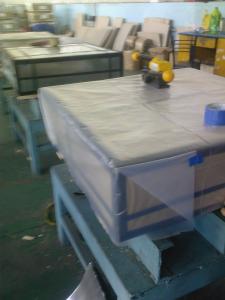First Class Level Tinplate Sheet for sale
- Loading Port:
- China main port
- Payment Terms:
- TT or LC
- Min Order Qty:
- 25 m.t.
- Supply Capability:
- 4000000 m.t./month
OKorder Service Pledge
OKorder Financial Service
You Might Also Like
First Class Level Tinplate Sheets Details:
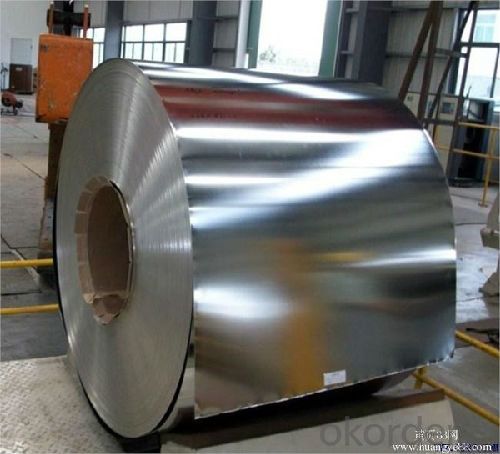
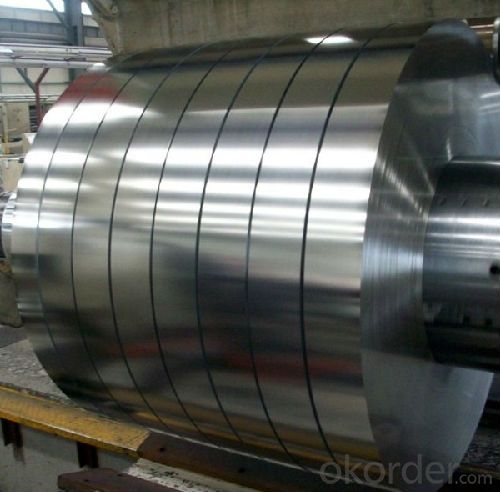
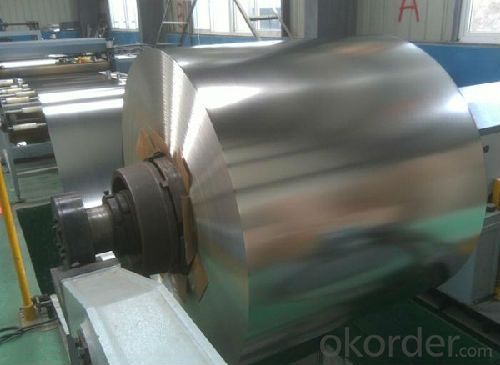
Minumum Order Quantity: 25 MT Loading Port:China Main Port
Annual Capacity: 400,000MT Payment Terms:TT or LC
| | | | | | |
| | | | | |
Product Description:
Prime Quality Tinplate Sheets Usage and Applications
Prime Quality Tinplate Sheets Specifications
Standard : GB2520-2000 ,JIS G3303
Steel type : SPCC
Coating : 2.8/2.8
Surface: Bright, Stone ,
Thickness:0.18
Width :600MM~1000MM
Temper : T1~T5
Package: tinplate wrapped completely with an inner cover of plastic or waterproof papers with vorners protected with metal angels.
Applications
Chemicals and painting cans
Dry food cans, such as fancy cans, biscuit cans, milk power cans, tea cans
Liquid food cans, such as edible oil cans, beverage cans, Tomato paste cans
Sea food cans
Crown corks, easy open ends(EOE)
Electrical machinery parts
Bakeware and household kitchen parts
FAQ
CNBM Introduction
China National Building Materials Group Cooperation, as a leading state-owned enterprise with 3 billion USD and 40,000 staff in China, CNBM was established in 1984 under the administration of the state-owned Assets Supervision and Administration commission of the State Council. There are over 300 surbordinate factories and companies in our group; 2 public listed companies in Hong Kong, 4 Public listed companies in China mainland; 11 publicly listed companies in which CNBM has a substantial percentage of shares. The business scope of CNBM covers from Manufacturing and sales of building materials to scientific research and design, engineering, import and export trading.
On July 7th, 2011, Fortune Magazine established Fortune Global 500 ranking on its website, and CNBM Group was listed for the first time, with a ranking of 485.
CNBM International Corporation
CNBM International Corporation, as an important import and export platform of CNBM Group, enjoys competitive advantages in importing and exporting of building materials as well as complete sets of machinery and equipments, engineering, and project contracting.
CNBM Branch Offices
In order to promote the business connection, CNBM has established branches and offices in lots of foreign countries, such as USA, GERMANY, UAE, SAUDI ARABIA, IRAN, JORDAN, LIBIA,ETHIOPIA, INDONESA, INDIA,VIETNAM,RUSSIA,KAZAKHSTAN. It is very helpful for the communication and after- sale services.
Factory Introduction
CNBM as one of the largest suppliers in tinplate industry, offers clientss prime quality tinplate in both coil and sheets. With multi-plants and fully integraded production, the annual capacity of tinplate is 400,000MT.
To ensure the high quality if the tinplate, CNBM owns complete equipment series.
- Reversing cold rolling machines: 14 sets
- Continuous rolling machines: 2 sets
- BA furnaces: 50
- CA line: 1
- Tinplate production line: 2
- SA& DA reduced tinplate sheet: Available
CNBM also produce other steel products, such as cold-rolled steel, hot dip galvanized steel, color coated steel and tin free steel coils and sheets.
- Q: How does tinplate packaging contribute to product protection against breakage?
- Tinplate packaging contributes to product protection against breakage by providing a durable and sturdy barrier between the product and external factors. The metal material of tinplate packaging offers excellent resistance to impact, preventing breakage or damage during handling, transportation, and storage. Additionally, tinplate packaging can be designed with protective features such as cushioning or shock-absorbing mechanisms to further enhance its ability to safeguard the product from potential breakage.
- Q: How is tinplate used in the construction industry?
- Tinplate is commonly used in the construction industry for various applications. It is often utilized for roofing materials, such as tinplate shingles or metal roof panels, due to its durability, weather resistance, and corrosion protection. Additionally, tinplate is used for cladding or siding purposes, providing an aesthetically pleasing and long-lasting exterior finish for buildings. Its versatility also extends to ductwork, where tinplate is used to fabricate air conditioning and ventilation systems. Overall, tinplate's strength, flexibility, and protective properties make it a valuable material in the construction sector.
- Q: What are the common packaging formats for tinplate?
- The common packaging formats for tinplate include cans, containers, tins, and boxes.
- Q: How to distinguish galvanized plate and tin plate
- From the outside, hot galvanized, electro galvanized tin plate surface is rough, thick tin layer of light and bright, thin tin layer, hot galvanized galvanized is not only the contest, Matt
- Q: What are the typical lead times for tinplate production?
- The typical lead times for tinplate production can vary depending on factors such as the quantity required, complexity of the design, and the manufacturer's production capacity. However, on average, lead times for tinplate production usually range from several weeks to a few months.
- Q: How does tinplate perform in terms of temperature resistance?
- Tinplate has good temperature resistance, as it can withstand both high and low temperatures without significant deformation or degradation.
- Q: How does tinplate compare to plastic in terms of sustainability?
- Tinplate generally has a better sustainability profile compared to plastic. Tinplate is made from steel, which is a widely recycled material, and it has a high recycling rate. Plastic, on the other hand, is derived from fossil fuels and has a lower recycling rate. Tinplate is also more durable and can be reused multiple times, whereas plastic is often single-use and ends up in landfills or as litter. Additionally, tinplate has a lower carbon footprint and contributes less to environmental pollution compared to plastic. Overall, tinplate is considered a more sustainable packaging option.
- Q: Can tinplate be used for packaging fragile items?
- Yes, tinplate can be used for packaging fragile items. Tinplate is a strong and durable material that provides excellent protection against damage. Its resistance to impact and ability to withstand pressure make it suitable for packaging fragile items safely. Additionally, tinplate's ability to resist corrosion ensures that the packaging remains intact and protects the fragile items throughout the shipping or storage process.
- Q: How is tinplate coated with organic materials?
- Tinplate can be coated with organic materials through a process called lacquering. This involves applying a thin layer of organic coating, such as lacquer or polymer, onto the tinplate surface. The coating is usually applied using roll-to-roll coating techniques, where the tinplate is passed through rollers while the organic material is spread evenly on the surface. This coating helps protect the tinplate from corrosion, enhances its appearance, and provides a barrier between the metal and the contents of the tinplate package.
- Q: What are the common printing methods used on tinplate?
- The common printing methods used on tinplate include lithography, offset printing, and screen printing.
Send your message to us
First Class Level Tinplate Sheet for sale
- Loading Port:
- China main port
- Payment Terms:
- TT or LC
- Min Order Qty:
- 25 m.t.
- Supply Capability:
- 4000000 m.t./month
OKorder Service Pledge
OKorder Financial Service
Similar products
Hot products
Hot Searches
Related keywords
